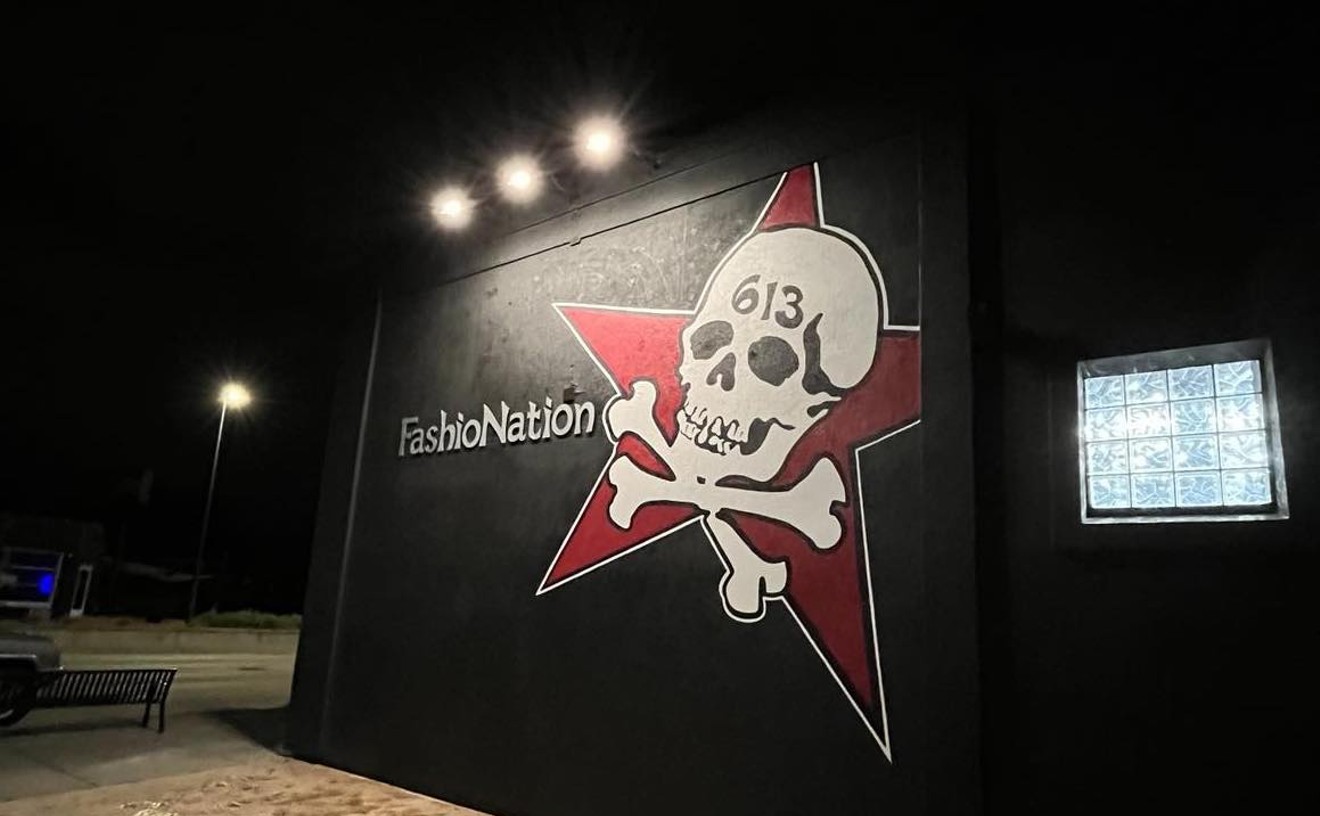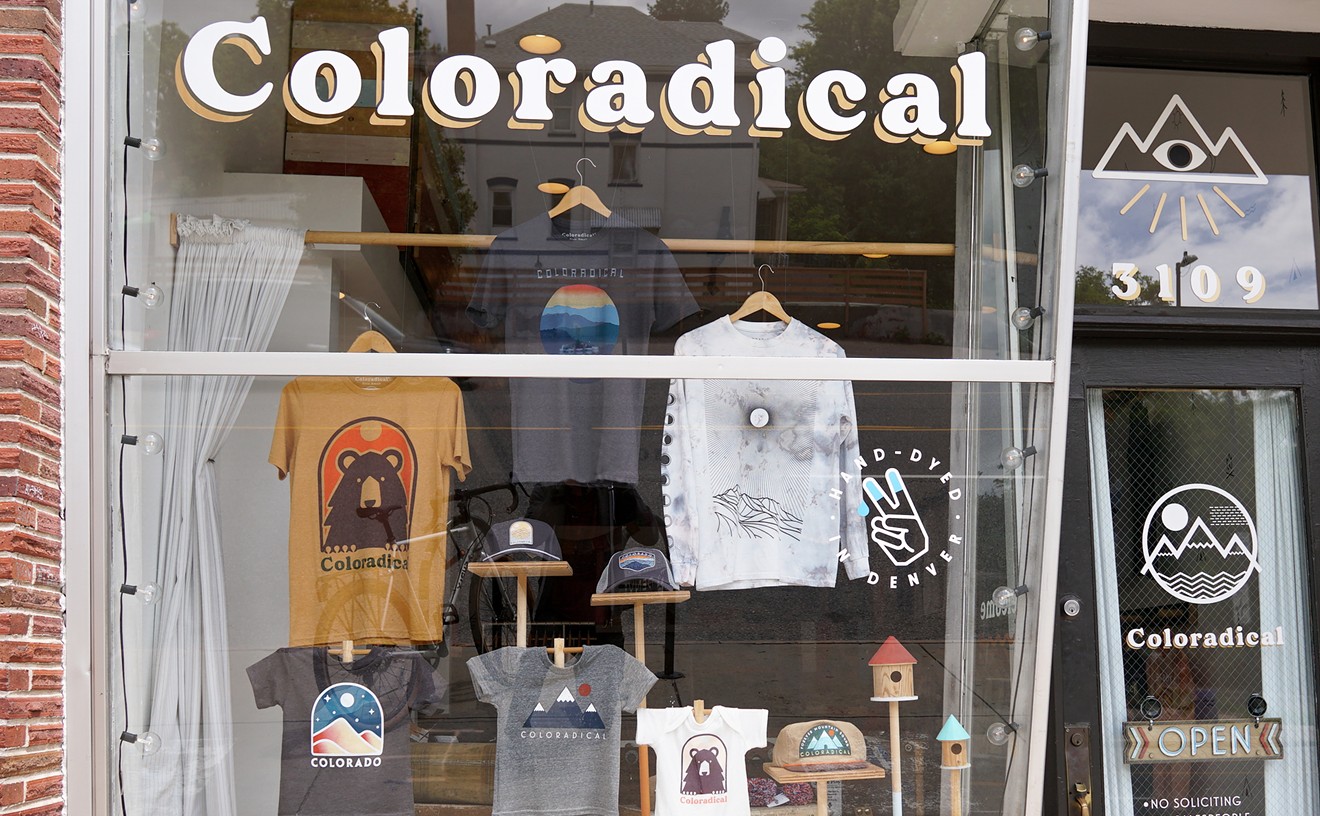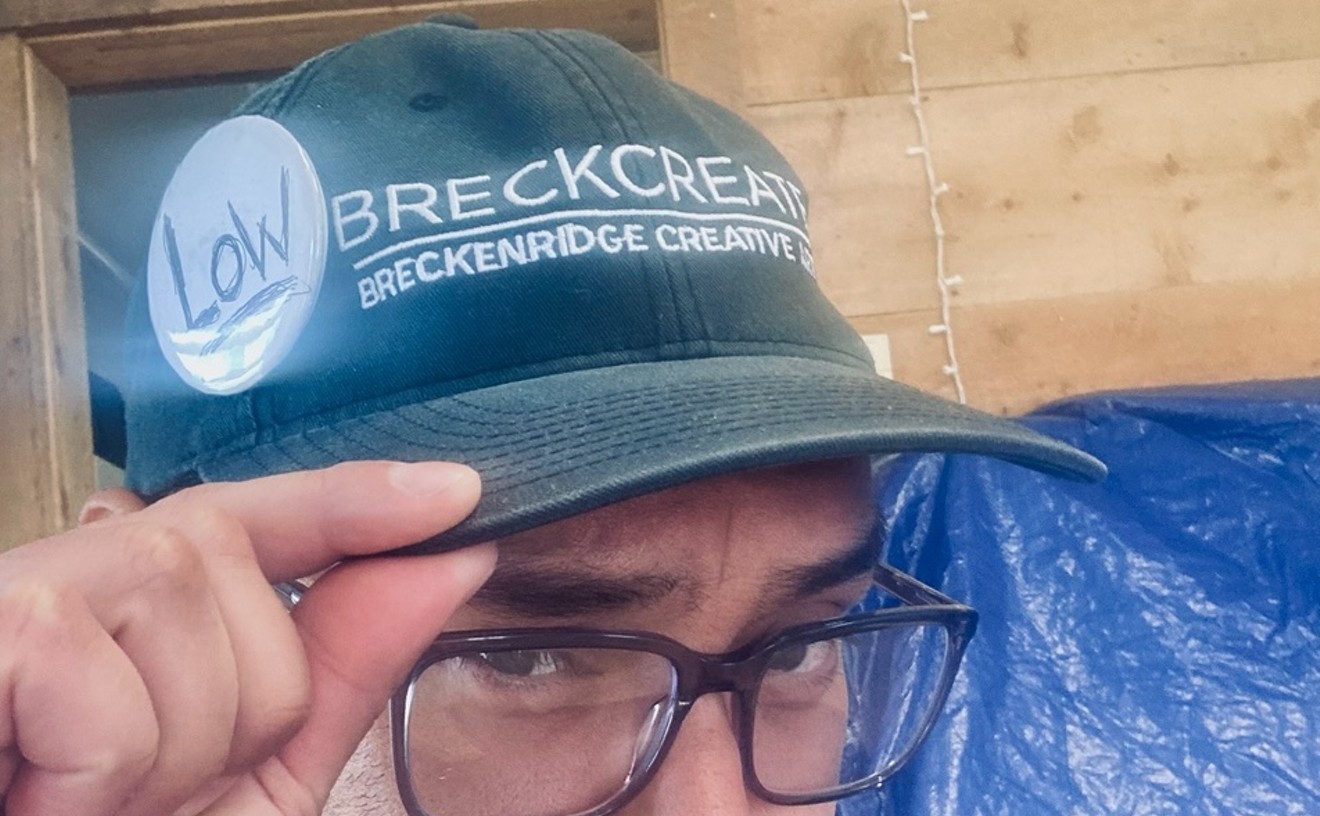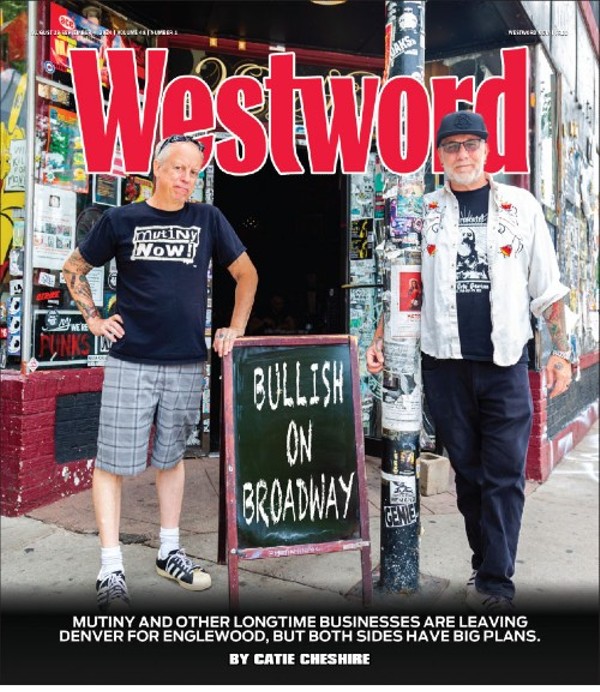But that’s not the intention of the new owners, says Wade Murphy, one of the partners who bought the theater in September for $2.6 million. Instead, they want to restore as much of the facade as they can and turn the inside into a community gathering place and distillery. They’ve met with neighbors, and their argument was so persuasive that TRVE Brewing owner Nick Nunns, who originally sounded the alarm over the application for non-historic status, was persuaded. “It seemed to me like they had the best interests of the neighborhood and the building in mind, so I didn’t file the application for designation.... Hopefully my trust isn’t taken advantage of,” he says.
But then Nunn adds, “We’ve always got the liquor-license process...,” citing a time-honored way for neighbors to share their feelings with the city.
In the meantime, want to see more of the Webber's non-historic history? Reader Paul O'Malley sent photos, newspaper clippings and excerpts from newspaper stories covering the opening of the theater in 1917.
"A new suburban motion picture theater will open its doors at South Broadway and Bayaud street next Thursday evening with speeches by city officials. The Webber will make a substantial bid for patronage. The new theater is one of the most artistic amusement houses in the city, with many unique features in decoration and appointments which have not been suggested before in local buildings. The scheme of interior decoration has been developed from "The Soap Bubble Girl', a beautiful statue fashioned by a Denver sculptor. At either side of the entrance, at the head of the main aisle and in niches about the stage these figures have been set. A combination of colors which might easily be rioutous if untempered by a knowledge of values has been used in this decoration. Large panels picturing varicolored floating bubbles adorn the walls. Medallion art with jewel like projections in soft tones have been placed at well calculated intervals.
The hangings are of a brilliant yellow boarded in black. Carpets made up of block of black and yellow, checked off with slender lines to relieve the glaring effect, are bordered with a faint suggestion of green and red. The projection booth, a necessary part of the equipment, heretofore most unlovely, has become a thing of beauty in the hands of Mr. Webber and the architect. Incidentally, Mr. Webber is no novice in the picture business. He was a Curtis street exhibitor until a little over a year ago, when he decided to retire, but the attraction of the game was stronger than his resistance and the desire to build a motion picture theater in which many of his ideas could be worked out came back stronger than ever. The disguised projection booth has been one of his pet hobbies. The skeleton is much like every other booth. built on strictly fireproof lines, save that a greater circulation of air and many conveniences are insured for the operator. Outside of the sheet iron skeleton, French doors draped in yellow have been placed, giving the effect of a hidden sun parlor from the balcony upon which it opens. On this balcony, a limited number of patrons may hold private parties. An adjacent smoking room is well fitted with exhaust fans. On either side of the entrance well ventilated places have been set apart behind glass doors for an aquarium and an aviary respectively. A bird bath topped with a facsimile of the "Happy Fairy" provides running water for the canaries among the potted plants. In the lobby, the "Water Kiss" fountain, duplicate of that in a New York hotel, occupies a prominent place. Those who drink catch the water from the parted lips of a woman of Grecian features. The system of ventilation and heating is one of the most approved. Flood lighting will make the exterior one of the most brilliant in the city. At either corner of the roof will be trained over an artistic arbor." (Mary Grover's column in the Denver Times, January 27, 1917).
"South Denver Movie Made Cubist Palace Webber's theater, a motion picture house of original and attractive design, decorated and furnished in cubistic style, will open for the first time at South Broadway and Bayaud street, Thursday, Feb. 1
De Witt C. Webber, owner of the new screen palace, formerly owned a theater on Curtis street [the Iris Theater, 1746 Curtis Street from June 1910 to September 1915]. He sold it with the intention of retiring, but finally decided to build a new theater according to plans entirely his own. A system of indirect lights illuminate the front of the building. In the lobby a cubist fountain bubbles up; wide doors set in marble walls lead into a foyer carpeted in thick velvet of black and gold; six figures holding up alabaster globes light the interior. The walls are decorated in a bubble design suggested by the light globes. Heating, ventilation and lighting systems of the latest scientific efficiency have been installed. The theater will seat nearly a thousand persons. These seats are planned in a special way to give a maximum of comfort. The building is of steel and stone, fire proof and reinforced. Architect's say that no better picture house has been built in the West than Webber's" (Rocky Mountain News, January 28, 1917)
"Denver's Newest Neighborhood House Opens Webber's Show Has Formal Premiere on February 1 Over 2,000 Persons Turn Out to Celebrate the Occasion Has 1,000 Seats by E.C. Day Denver, Colo.
The Webber Show, Denver's newest neighborhood picture house was formally opened February 1. Fully 2,000 people turned out for the occasion, in spite of bad weather and the theater's seating capacity of 1,000 was taxed to its utmost all night. State and city officials and prominent men made speeches as part of the dedicatory program. The Webber is the largest and most costly neighborhood theater in Denver and is said to be without equal in the whole United States. It is owned by DeWitt C. Webber, a veteran show man who until recently operated the Iris, a downtown picture house. E.H. Moorman, who has had considerable experience in the building of theaters, was the architect in charge of the construction of the Webber. Mr. Webber announced that the policy of his house will be to show only first run
pictures at a standard admission price of 10 cents. This is something that never before has been attempted in Denver. All the other neighborhood houses in the city use second run films. 'Her New York', a Pathe production featuring Gladys Hulette, and a Universal comedy constituted the opening program." (Moving Picture World, February 24, 1917)












